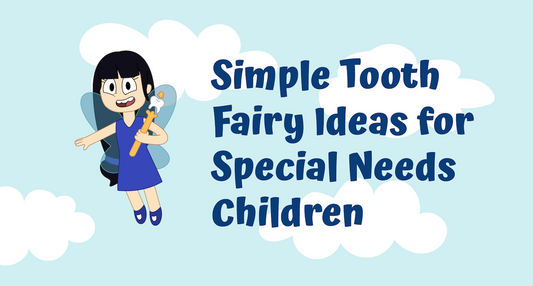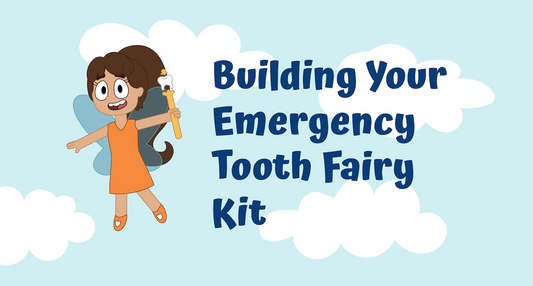Losing baby teeth is one of childhood's most significant milestones. From that first wobbly tooth to the final visit from the tooth fairy, parents have the joy of guiding children through this exciting developmental journey. This comprehensive guide walks you through every stage of your child's dental development, with expert tips for making each tooth loss a magical moment to remember.
When Do Children Start Losing Their Baby Teeth?
Most children begin losing their baby teeth around age 6, though this can vary between 5-7 years old. Generally, teeth fall out in the same order they emerged—starting with the bottom front teeth (lower central incisors) followed by the top front teeth. This natural progression continues until around age 12, with molars typically being the last to go.
Signs your child may be about to lose a tooth include:
- Increased wiggling or playing with a specific tooth
- Mild discomfort while eating certain foods
- Visible loosening when the tooth is gently tested
- Your child mentioning the tooth feels "funny" or different
Remember that early or late tooth loss can be perfectly normal, but consult your pediatric dentist if you have concerns about timing or if permanent teeth emerge before baby teeth fall out.
Your Child's Tooth Loss Timeline: What to Expect When
While every child's developmental timeline is unique, here's a general sequence of tooth loss to anticipate:
Ages 5-7:
- Lower central incisors (bottom front teeth)
- Upper central incisors (top front teeth)
Ages 7-8:
- Lateral incisors (teeth adjacent to the front teeth)
Ages 9-11:
- First molars
- Lower canines (pointy teeth)
Ages 10-12:
- Upper canines
- Second molars
Creating a tooth tracking chart can help your child visualize this journey and build excitement for each upcoming tooth fairy visit. The Hi Tooth Fairy app offers digital tracking that makes this process even more interactive and fun.
Handling Different Types of Tooth Loss Situations
The Wiggly Tooth Phase: When a tooth first becomes loose, resist the urge to pull it out. Allow natural loosening to occur, which typically takes 2-3 weeks. Encourage gentle wiggling with a clean finger or tongue, but avoid forcing the tooth out before it's ready.
The "Swallowed Tooth" Scenario: If your child accidentally swallows a tooth (often during eating or sleeping), reassure them this is perfectly safe and happens more often than they might think. Write a note to the tooth fairy explaining what happened, and the magic can continue without the physical tooth.
The School Day Loss: Many teeth make their grand exit during school hours. Consider sending a special "tooth container" in your child's backpack, or ask their teacher if they have tooth fairy accommodations in the classroom (many do!).
The "Lost Tooth" Crisis: When a tooth gets truly lost after falling out, help your child write a detailed note explaining what happened. The tooth fairies understand these situations and appreciate honesty! Check out our guide to common tooth fairy questions for more tips on handling these scenarios.
Turning Tooth Loss into Magical Memories
Each lost tooth presents an opportunity to build on your family's tooth fairy tradition:
First Tooth Special Celebration: The very first tooth deserves extra attention! Consider a special meal, small celebration, or enhanced tooth fairy gift to mark this major milestone. Our ideas for magical tooth fairy celebrations can help make this occasion extraordinary.
Tooth-Friendly Celebration Foods:
- Smoothies and yogurt parfaits
- Soft pasta dishes
- Applesauce and puddings
- Tooth-shaped cookies or cupcakes (for after the tooth is out!)
Photo Documentation: Capture that adorable gap-toothed smile after each tooth loss. These photos become precious keepsakes that document your child's changing appearance through the years. Learn more about preserving tooth fairy memories with our creative documentation ideas.
Tooth Fairy Communication: Encourage your child to write notes to their tooth fairy, ask questions, or draw pictures. Two-way communication (with fairy responses, of course) deepens the magic and personal connection. The Hi Tooth Fairy app makes this interactive communication even easier with direct messaging to the fairy friends.
Supporting Dental Health During the Tooth Transition Years
As baby teeth make way for permanent teeth, good dental habits become even more crucial:
Gentle Brushing Techniques: Show your child how to carefully brush around loose teeth and newly emerging permanent teeth, which can be more sensitive.
Regular Dental Check-ups: Maintain routine dental visits every six months to ensure permanent teeth are emerging properly.
Healthy Eating for Strong Teeth: Emphasize calcium-rich foods, limit sugary snacks, and encourage water instead of sugary drinks to protect both remaining baby teeth and new permanent teeth.
When to Consult a Dental Professional
While tooth loss is a natural process, certain situations warrant professional attention:
- Permanent teeth emerging significantly behind or in front of baby teeth
- Baby teeth that aren't loosening despite permanent teeth coming in
- Extreme discomfort or bleeding during tooth loss
- Signs of infection around a loose tooth
- Permanent teeth that look discolored or misshapen
Your pediatric dentist can provide guidance specific to your child's dental development and address any concerns about the tooth loss process.
The Magic Continues: Making Later Tooth Fairy Visits Special
As children get older and lose their final baby teeth, the magic can evolve:
Increasing "Tooth Values": Some families increase the tooth fairy gift value for later teeth, especially molars which are "bigger jobs" for the fairies. Learn more about typical tooth fairy rates and alternatives to monetary gifts.
Behind-the-Scenes Magic: For older children, emphasize what happens to teeth after collection—like their important role powering Flutterville through the Twinkle Tooth Power Plant! Explore our enchanting tooth fairy ideas for creative ways to enhance the magic.
Transition Traditions: Create a special celebration for the final tooth, marking the transition from early childhood to the next phase of growth.
Conclusion: Treasuring the Tooth Fairy Years
The window for tooth fairy magic is surprisingly brief—just a few years in your child's life. By creating meaningful traditions, capturing memories, and celebrating each tooth loss milestone, you transform a simple biological process into magical childhood memories that last a lifetime.
From that exciting first wiggle to the bittersweet final fairy visit, the journey of losing baby teeth represents growth, development, and the precious fleeting nature of childhood. Embrace each moment of this special time, knowing you're creating the magical childhood memories your little one will someday treasure.
Want to make the tooth fairy experience even more interactive and magical? Download the Hi Tooth Fairy app and introduce your child to Birdie, Frankie, Lulu, Piper, Tulip, and Winnie – the real tooth fairies from Flutterville!




